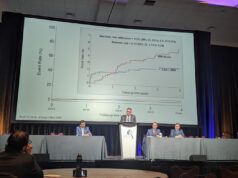 Sandra Boccard-Binet is a research scientist at the University of Oxford, Oxford, UK. Her research focuses on deep brain stimulation. Here she writes about her personal experiences with transcranial Direct Current Stimulation (tDCS), an account which is currently in press in the Journal of Epilepsy and Behavior Reports.
Sandra Boccard-Binet is a research scientist at the University of Oxford, Oxford, UK. Her research focuses on deep brain stimulation. Here she writes about her personal experiences with transcranial Direct Current Stimulation (tDCS), an account which is currently in press in the Journal of Epilepsy and Behavior Reports.
Back in 2012, my husband-to-be and I had recently moved from France where I was awarded a PhD in Biology, developing a treatment increasing the chemosensitivity of glioblastomas. I was a newly appointed post-doctoral fellow in neuroscience at the University of Oxford, when a research team we used to collaborate with, started to recruit healthy volunteers for a tDCS study. Being at that time a healthy woman in her early thirties, (therefore a seemingly ideal volunteer), I decided to take part.
Small pads were placed on the top of my head and behind my left shoulder. The student in charge of the experiment calibrated the tDCS just below the threshold at which I was able to feel a slight tingling when the stimulation was on. Blinded to the on/off status of the stimulation I performed an Erickson flanker task where I had to observe arrows on a computer screen and indicate as fast as possible the direction of the middle one. No side-effect was observed during the experiment, not even a headache, and I simply went back to my own research on deep brain stimulation afterwards.
Three weeks later, while walking along a corridor at my workplace, I suddenly had a dream while still being aware that I was awake and walking. I stayed a bit confused for a minute, not being able to swipe my access card the right way. The next days I had similar experiences: while reading out-loud at night in bed, and in my car when, luckily, I was not the driver. I mentioned these episodes to my principal investigator, professor of Neurosurgery, who strongly advised me to see one of our neurologists.
As focal seizures were assumed, an electroencephalogram was performed, and an epileptogenic focus was indeed observed in my left temporal lobe. A CT-scan and a MRI showed a left calcified thalamus as well as an abnormality in the left amygdala. The latter was believed to be a glioma. Surprisingly, I did not feel happy to see an old friend from my PhD. The news was instead quite devastating to me and for my family, at Christmas time and only six months before my wedding. Fortunately, after repeated scans, this so-called abnormality remained unchanged along the years and its malignancy was rejected. The cause of my epilepsy was thus not tumoral.
The only remaining probable cause for the triggering of my temporal lobe epilepsy was the tDCS study. First, it was temporally adjacent to the occurrence of the first epileptic seizures. Moreover, tDCS is strongly linked to epilepsy. It is to be avoided by anyone with a family history of epilepsy. Furthermore, its fundamental principle is to send electric current through the brain. The most likely explanation was that my abnormal but, yet, asymptomatic brain features created a subliminal epileptic background and that the tDCS triggered my temporal lobe epilepsy.
In the scientific literature, tDCS is widely described as safe. Only transient side-effects have been reported so far (skin lesions like burns, and mental health issues in depressed patients) apart from the case of a young epileptic boy who experienced a seizure during a tDCS trial. However, it does appear that tDCS has triggered my lifelong temporal lobe epilepsy, even though I was healthy with no family history of epilepsy. And since the tDCS experiment, my life is definitely different from what it used to be. Twice a day I have to take several medications, I still experience a few seizures a month, often suffer from a debilitating fatigue and am not allowed to drive anymore. The impact of my temporal lobe epilepsy on my life, and on my family is massive.
Epilepsy & Behavior Reports recently accepted to publish my self-case-report. This case report might be the first to be published, but it does not mean that I am the only one experiencing a long-term medical issue associated with tDCS. As such a patient, I wanted my story to be told hoping that other asymptomatic healthy volunteers would be spared.
As a neuroscientist, I think that it is indispensable that most, if not all, researchers using tDCS are aware of the potential risks seemingly healthy volunteers are exposed to. Preventively scanning them would be the way to safely discard asymptomatic volunteers presenting any abnormal brain feature. The cost might be high for the study sponsors, however, it has to be balanced by the cost of claimed indemnities and that imposed on our health system. And, most importantly, the safety of volunteer is of a paramount priority.
Sandra Boccard-Binnet is a functional neurosurgery researcher at the University of Oxford, Oxford, UK.
The author has no disclosures.











